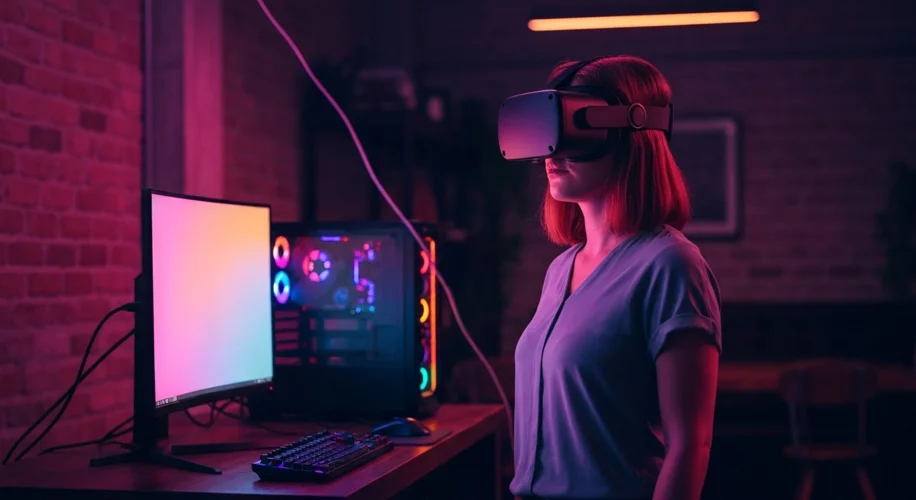Hey everyone! Today, we’re diving deep into the awesome world of PC Virtual Reality, or PC VR for short. If you’ve ever wondered what it takes to get that truly immersive VR experience powered by your computer, you’re in the right place.
What Exactly is PC VR?
Think of PC VR as the high-performance tier of virtual reality. Instead of relying on a headset’s built-in processor, PC VR leverages the power of your gaming PC. This means more complex graphics, smoother frame rates, and access to a massive library of high-fidelity VR titles, especially on platforms like SteamVR. Basically, your PC does the heavy lifting, and the headset shows you the incredible results.
Getting Started: The Setup Essentials
Setting up PC VR can seem a little daunting, but it breaks down into a few key areas:
- The Headset: This is your window into the virtual world. Popular choices include the Valve Index, HTC Vive series, and HP Reverb G2. Each has its own strengths, but they all connect to your PC.
- The PC: This is crucial. You’ll need a PC that meets the recommended specs for VR. Generally, this means a capable graphics card (GPU) – think NVIDIA RTX 3060 or higher, or AMD RX 6700 XT or higher – a decent CPU, and enough RAM (16GB is a good starting point). Don’t forget a Virtual Reality Ready USB 3.0 port.
- The Connection: This is where things get interesting.
- Wired: The classic. You’ll connect your headset to your PC using a cable. This usually offers the most reliable performance and lowest latency. The downside? You’re tethered, which can limit your movement. Cables can also be a bit of a trip hazard if you’re not careful.
- Wireless: The dream! This typically involves using Wi-Fi to stream the VR experience from your PC to your headset. Technologies like Steam Link, Virtual Desktop, or Meta’s Air Link are the main players here. For the best wireless experience, you’ll want a strong, dedicated 5GHz Wi-Fi network, ideally with your PC connected via Ethernet to the router. This gives you incredible freedom of movement but can sometimes introduce a bit of latency or visual compression if your network isn’t up to par.
Wired vs. Wireless: The Big Debate
- Wired Pros: Maximum performance, lowest latency, no network issues. Simple plug-and-play once drivers are installed.
- Wired Cons: Limited by cable length, potential for tangles and trip hazards.
-
Wireless Pros: Unrestricted movement, total freedom, cleaner setup.
- Wireless Cons: Requires a strong Wi-Fi network, potential for latency or visual artifacts, can be more complex to set up initially.
Performance and Compatibility: What to Watch Out For
Your PC’s specs are the biggest factor in PC VR performance. A beefier GPU means better graphics, higher resolutions, and smoother frame rates. If your PC is struggling, you might notice stuttering, screen tearing, or low-resolution visuals.
Compatibility is usually pretty straightforward if your PC meets the minimum requirements. Most VR games and applications are built for PC VR platforms like SteamVR, ensuring broad compatibility. Always check the system requirements for specific games you’re interested in.
Common Questions Answered
- Can my laptop handle PC VR? Possibly! Many gaming laptops are powerful enough, but always check their specs against VR recommendations. Dedicated GPUs are key.
- How do I improve wireless performance? Ensure your PC is connected to your router via Ethernet. Use a 5GHz Wi-Fi band, preferably with a dedicated router for your VR setup. Adjust settings in your wireless VR app for the best balance of quality and performance.
- What if I experience motion sickness? This is common in VR! Start with shorter sessions, ensure your frame rate is smooth, and try games with comfort options like artificial locomotion or teleportation. Getting used to it takes time.
PC VR offers an unparalleled level of immersion. Whether you go wired or wireless, the journey into virtual worlds is worth it. What are your favorite PC VR experiences? Let me know in the comments!

